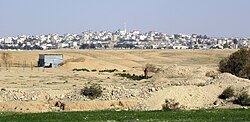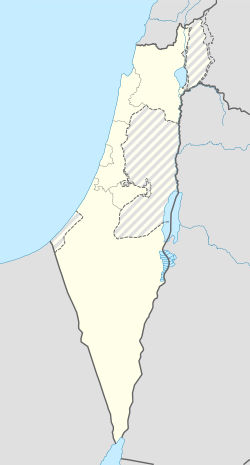
Rahat is an Arab Bedouin city in the Southern District of Israel. In 2022, it had a population of 79,064. As such, it is the largest Bedouin city in Israel, and the only one to have city status.

Hura, or Houra is a Bedouin town in the Southern District of Israel. It is located near Beersheba and beside the town Meitar. The town was established in 1989 as a part of solution offered by the state for the consolidation of Negev Bedouin population, and was declared a local council in 1996. In 2022 it had a population of 24,822.
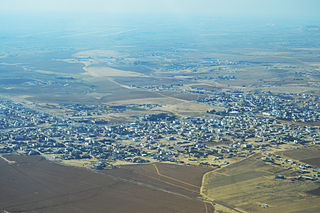
Kuseife or Kseifa is a Bedouin town in the Southern District of Israel. Kuseife was founded in 1982 as part of a government project to settle Bedouins in permanent settlements. In 1996 it was declared a local council, and in 2022 it had a population of 23,990.

Lakiya or Laqye is a Bedouin town in the Southern District of Israel. In 2022 it had a population of 16,011.

Shaqib al-Salam or Segev Shalom and also known as Shqeb as-Salam, is a Bedouin town and a local council in the Southern District of Israel, southeast of Beersheba. In 2022 it had a population of 12,540.

Tel Sheva or Tel as-Sabi is a Bedouin town in the Southern District of Israel, bordering the city of Beersheba. In 2022 it had a population of 22,849.
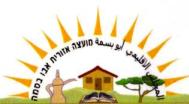
Abu Basma Regional Council was a regional council operating in 2003-2012 and covering several Bedouin villages in the northwestern Negev desert of Israel. Following the Minister of Interior decision on November 5, 2012, it was split into two newly created bodies: Neve Midbar Regional Council and al-Kasom Regional Council.

Bir Hadaj is a Bedouin agricultural town located in the Negev desert, near Revivim, Israel. In 2022 its population was 6,332.

The Negev Bedouin are traditionally pastoral nomadic Arab tribes (Bedouin), while some are of Sub-Saharan African descent, who until the later part of the 19th century would wander between Hijaz in the east and the Sinai Peninsula in the west. Today most live in the Negev region of Israel, while a minority who were expelled during the 1948 war live in Palestine. The Bedouin tribes adhere to Islam and most are Israeli citizens. Some Bedouins voluntarily serve in the IDF.

Umm Batin is a Bedouin village in southern Israel. Located in the northern Negev desert, 12 km northeast of Beersheba and adjacent to the highway 60, it falls under the jurisdiction of al-Kasom Regional Council. In 2022 it had a population of 4,981.
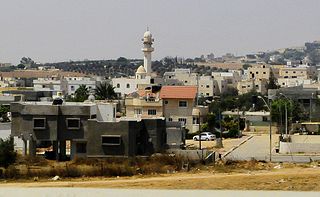
Al-Sayyid or al-Sayed is a Bedouin village in Israel. Located in the Negev desert between Arad and Beersheba and just south of Hura, it falls under the jurisdiction of al-Kasom Regional Council. In 2022 the village's population was 6,498.

Qasr al-Sir is a Bedouin village in the Negev desert in southern Israel, adjacent to highway 25. The village covers 4,776 dunams. Located three kilometres west of Dimona, it falls under the jurisdiction of Neve Midbar Regional Council. In 2022 it had a population of 2,867.

Tirabin al-Sana, also Tarabin, is a Bedouin village in the Negev desert in southern Israel. The village was built for the Tarabin tribe. Located near Rahat and Mishmar HaNegev, it falls under the jurisdiction of al-Kasom Regional Council. In 2022 it had a population of 1,294.

Unrecognized Bedouin villages in Israel are rural Bedouin communities in the Negev and the Galilee which the Israeli government does not recognize as legal. They are often referred to as "unrecognized villages".
The Regional Council of Unrecognized Villages of Negev (RCUV) is a political advocacy group that was established in 1997. It represents the interests of the Bedouin population living in the unrecognized dispersed communities in the Negev Desert in southern Israel.
The Abu Alkian is a tribe living in the Negev desert in southern Israel.
Neve Midbar Regional Council is one of two regional councils formed as a result of a split of Abu Basma Regional Council on November 5, 2012. This regional council is situated in the northwestern Negev desert of Israel and populated by the Negev Bedouin.
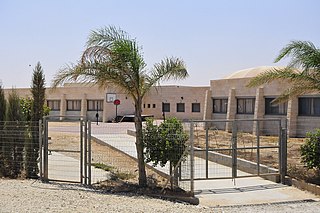
al-Kasom Regional Council is one of two Negev Bedouin regional councils formed as a result of the split of the Abu Basma Regional Council on November 5, 2012. Al-Kasom regional council is in the northwestern Negev desert of Israel.
Abu Talul is a Bedouin township in southern Israel. Located in the Negev desert around ten kilometres east of Beersheba and to the south of highway 25, it falls under the jurisdiction of Neve Midbar Regional Council. In 2022 it had a population of 2,492.

A New Dawn in the Negev is a Bedouin-Jewish co-existence NGO that provides programming for Bedouin youth-at-risk. It is based in Rahat, the only Bedouin city in Israel. Over 600 Bedouin youth aged 5–18 per year participate in their programs.
